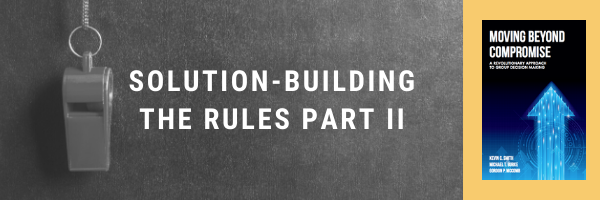Introducing the Moving Beyond Compromise Blog

This series of articles will explore group decision-making and problem-solving with the aim of examining the methods used and why they so often fail to deliver effective, or sometimes any, results. I will then look at a different approach to the two related activities of decision-making and problem-solving that can, if applied, lead to the outcomes we seek.
The overall “field” of studying decision-making and problem-solving is pretty vast, with many books, academic studies and articles, blogs, and even university classes about these subjects. In the course of these articles I will refer to some of the literature directly but will mainly focus on summarizing current practices being used and examine why they so often fail to succeed. Along the way I will offer up some new approaches.
Initially, I will be focusing on decision-making for businesses but later will go into applications in other settings.








